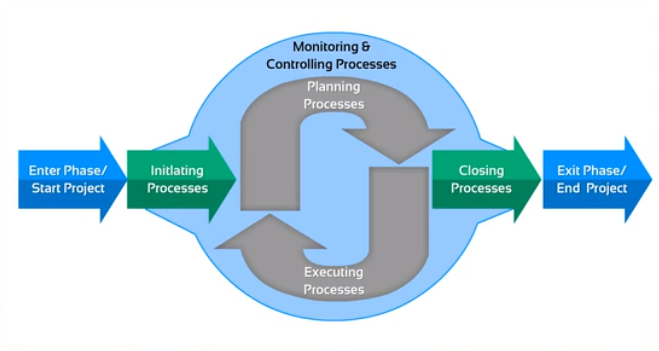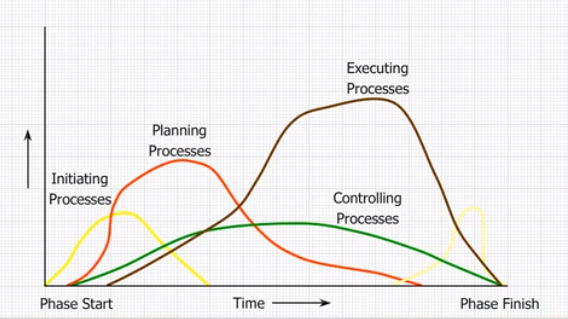1. _____ refer(s) to all the work involved in creating the products of the project and the processes used to create them.
a. Deliverables
b. Milestones
c. Product Development
d. Scope
2.Which tool or technique for collecting requirements is often the most expensive and time consuming?
a. Surveys
b. Observation
c. Interviews
d. Focus Groups
3. A _____ is a deliverable-oriented grouping of the work involved in a project that defines its total scope.
a. Work Package
b. WBS
c. Scope Statement
d. WBS Dictionary
4. What approach to developing a WBS involves writing down or drawing ideas in a nonlinear format?
a. Mind mapping
b. Top-down
c. Bottom-up
d. Analogy
5. Assume that you have a project with major categories called planning, analysis, design and testing. What level of the WBS would these items fall under?
a. 3
b. 0
c. 2
d. 1
6. Which of the following is not a best practice that can help in avoiding scope problems on IT projects?
a. Follow good project management processes
b. Use off the shelf hardware and software whenever possible
c. Keep the scope realistic
d. Don’t involve too many users in scope management
7. Why would a large company terminate a large project after spending $170 million USD on it?
a. The company found better technology
b. The scope could be too much to handle
c. The company decided to outsource the work
d. The government requirement that prompted the project was repealed
8. Scope _____ is often achieved by a customer inspection and then sign-off on key deliverables.
a. acceptance
b. completion
c. close-out
d. validation
9. Which of the following is not a suggestion for improving user input?
a. Co-locate users with developers
b. Have users on the project team
c. Develop a good project selection process for IT projects
d. Only have meetings as needed, not on a regular basis
10. Project management software helps you develop a _____, which serves as a basis for creating Gantt charts, assigning resources, and allocating costs.
a. project plan
b. schedule
c. WBS
d. deliverable
11. Going down a level in a WBS _____.
a. Results in a lesser degree of accuracy
b. Results in a greater degree of accuracy
c. Is only needed on projects over $1,000,000
d. Allows the project manager to better develop the project charter
12. Who benefits from a WBS?
a. The project manager and the customer
b. The project manager
c. The customer
d. Neither project manager nor customer
13. A WBS dictionary does not _____.
a. Designate the staff assigned
b. Include the budget for the item
c. Define the technical terms used in the project
d. Identify the schedule dates for the item
14. At what stage of scope management do you develop a WBS?
a. Definition
b. Initiation
c. Verification
d. It is part of the project charter
15. What is “gold plating”?
a. “Polishing” the project to get it down to the bare minimum
b. Including enhancements that are not necessary to accomplish the objective of the project
c. Part of the scope verification process
d. Needed to keep the project on track
16. If you are approached by the customer and asked to make a change in the scope, you should _____.
a. Defer the decision to your boss
b. Inform the customer of the scope change procedure
c. Make sure the customer understands the impact and proceed if they do
d. Assign a specialist to handle the change
17. Scope verification _____.
a. Is not really a phase of scope management
b. Assures the “correctness” of the result
c. Should only be done at the final phase of the project
d. Assures the “acceptance” of the result
18. The project chapter _____.
a. Authorizes the project manager to use resources
b. Is developed by the project team
c. Includes a detailed WBS
d. Is required before scope initiation can begin
19. Which of the following is an example of “constrained optimization”?
a. Decision tree analysis
b. Cost/benefit analysis
c. Linear programming
d. RPN analysis
20. The scope management plan is developed _____.
a. During scope planning
b. During scope change control
c. After the WBS is complete
d. During scope initiation
21. Which forms the basis of the project plan?
a. The risk analysis
b. The project scope
c. The product scope
d. Scope verification
22. What is the objective of scope verification?
a. The customer accepts the phase or project
b. The project team assesses the quality of work
c. The customer recognizes the quality of work
d. The auditors sign off on the project
23. Why is a standard format for a WBS desirable?
a. It avoids wasted time developing the structure of the exercise
b. It can be used to develop a project charter
c. All projects can be decomposed to the same level of detail
d. It allows effective communication concerning the WBS level you are discussing
24. Which of the following would be found in a project charter?
a. Detailed estimates
b. The business case for the project
c. Staffing plans
d. Procurement plans
25. A senior manager external to the project should _____.
a. Develop the project charter
b. Develop the project budget
c. Develop the project staffing plan
d. Develop the project schedule



